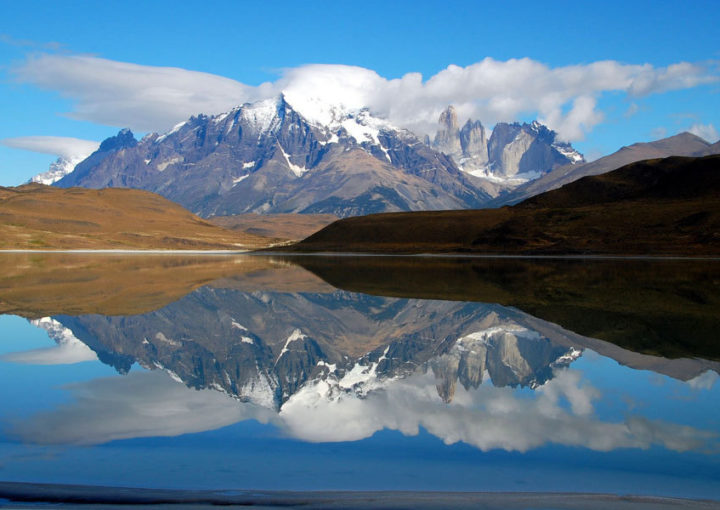Lima: Standard summit, standard conclusion?
UN climate summit outcome pleases few, but keeps path to global deal open
By Richard Black
Share
Last updated:
Having reported on five UN climate summits from a ringside seat, watching this one from a distance has been a very different experience.
But sometimes distance gives perspective – and perspective is very hard to come by in the final days of a summit, when everyone, journalists included, is running empty on very little sleep, facing a confusing sequence of documents, deadlines and diatribes.

So in search of some perspective, let’s go right back to Copenhagen, five years ago. Coming out of that summit, it wasn’t clear that the UN climate convention would survive at all.
It still wasn’t clear on the final morning at the following year’s summit, in Cancun.
I overheard Jairam Ramesh, India’s Environment Minister, declaring: ‘This process is dead.’
His British counterpart, Chris Huhne, spoke of a different possible outcome – that governments would become disillusioned with the UN climate convention and downgrade it, investing ever diminishing amounts of time and sending progressively more junior delegates, until it became one of those UN processes that pass by every year raising barely a whisper.
Clever diplomacy in Cancun papered over the cracks. And governments discovered new momentum the following year in Durban, when a novel grouping of ambitious countries including those of the European Union and small island developing states effectively ambushed the ‘coalition of the unwilling’ led by the US, China and India and embarrassed them into committing to a new global deal in 2015.
Since then, that ‘bloc of three’ have all announced new initiatives to constrain greenhouse gas emissions and stimulate low-carbon progress, most notably China’s commitment to peak its emissions by 2030 at the latest.
Outside the confines of government, September saw an unprecedented demonstration of public appetite for action. At least 2,000 places in the world saw people on the streets calling for progress, and leaders of faith and business communities argued vociferously for a low-carbon future.
The Intergovernmental Panel on Climate Change made the science-based case that rapid cuts in emissions were necessary to prevent the worst impacts of climate change, and the New Climate Economy report advanced the economic arguments.
So the UN climate process did not die, and has not withered into insignificance. However, stimulated by this sequence of events, some advocates of climate action put expectations on the Lima summit that in truth it was never going to meet.
Thorny issue

However many people, faith groups, environmental NGOs, business leaders and government ministers call for progress, climate change remains a really thorny issue.
And many governments’ plans for Lima were not set by marches and reports, but by the rather more formal outcomes of the Copenhagen, Cancun and Durban summits.
Against that backdrop, the Lima meeting largely did what it was supposed to.
A negotiating text exists that addresses essential elements of a global agreement. Governments collectively refined their view of what that agreement should look like [pdf link].
No-one’s wish-list has been met in full; it never is. But equally, no-one felt angry enough to block the pathway to finalising a deal at the Paris summit next year.
Realistic expectations
The Paris deal is not going to curb emissions enough to meet the agreed target of keeping global warming below 2 Celsius.
The idea of a comprehensive negotiated deal able to do that was buried at Copenhagen. Ever since then it’s been about individual governments setting out how much they are prepared to do, while also agreeing a process aimed at strengthening those commitments later on.
Lima kept this model alive. Neither the commitments nor the process are as strong as many would like, particularly the many nations that emit tiny quantities of greenhouse gases yet are highly vulnerable to climate impacts; but negotiators have largely delivered what they said they would.
And there was one very important development, in that governments are openly discussing a commitment to end fossil fuel use by a target date. It’s far from agreed; but it is now explicitly on the table.
Picture for Paris
Many more words will be written about the ‘road from Lima to Paris’ in the coming weeks and months.

Governments will hold a huge number of preparatory meetings and phone calls, both in and outside the UN framework, before we get there.
But I think a couple of things have become clear already in terms of what they need to do during the year ahead.
Firstly, the major disagreements need to be sorted out well before the Paris meeting.
Frankly, if governments are still unclear by then about the main elements of the draft agreement, it’s going to be a very, very hard meeting.
That means taking decisions during the months ahead – not just talking, but making decisions – on issues such as the legal form and the presence or absence of the Loss and Damage mechanism to compensate developing countries for impacts of previous emissions.
Secondly, rich nations have got to demonstrate how they will fulfil the pledge made five years ago to mobilise $100bn per year from 2020 for the developing world.
All kinds of mechanisms have been proposed including a Tobin tax and a levy on international shipping, but nothing has stuck [pdf link]. This pledge was not some airy aspiration, it was a firm promise – and we’re halfway through the period now until the date when the funds are supposed to flow.
It’s inevitable that the Paris meeting too will disappoint many – there is no chance of it agreeing everything needed to put the global economy on a track to 2C. But it’s not supposed to solve everything.
Nor was Lima. But in the big picture, it appears to have done enough.
Share